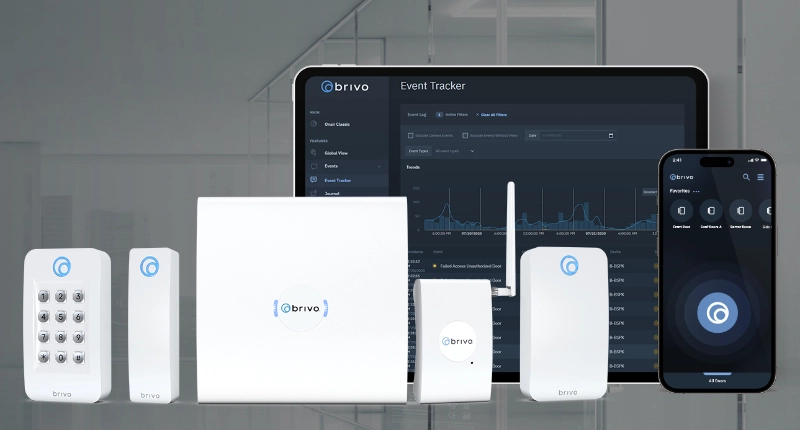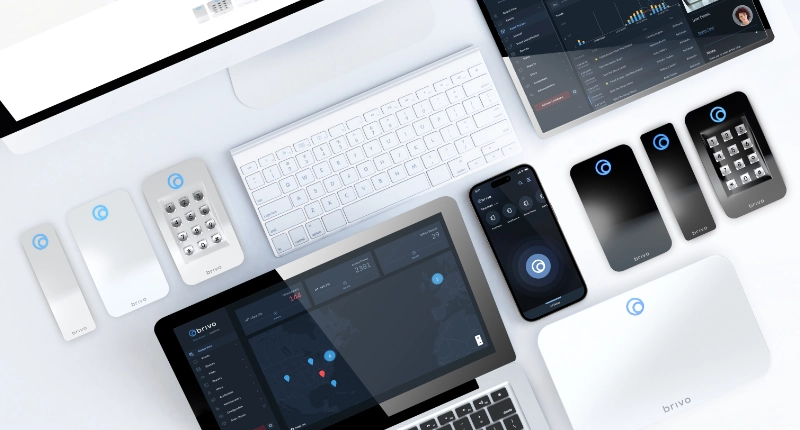Badges, tokens, and fobs are becoming artifacts of the past physical security and access control era. The new one emphasizes “frictionless” experiences, i.e., experiences in which employees and visitors don’t have to rummage around for their badges or wait for IT or security to give them entry to the building. Those experiences become a reality through a number of technologies, but the common ones are access control biometrics and radio frequencies (RFID). The two technologies can be used separately, or they can be combined. The latter option holds the most promise; it allows for greater reliability, accuracy, security, and convenience.
Biometrics
Options in access control biometrics include fingerprints, iris recognition, heartbeats, and facial recognition. The most popular option is facial recognition because it often is the simplest and least expensive to implement. Enterprise environments can invest in off-the-shelf video cameras and integrate them with software analytics in order to compare people entering the camera’s field of view against a database. The solution works well in low-capacity environments, but it can struggle to scale. Its underlying technology simply can’t keep up with the required throughput as more people join the organization. When the solution breaks down, some people are incorrectly allowed access while others are incorrectly denied it. A frictionless experience it is not. Some enterprise environments turn to more complex facial recognition technologies like 3D facial modeling. As with basic facial recognition, it can be plagued by reliability and accuracy issues. It poses other challenges; for instance, it often is more expensive to implement than a basic facial recognition system and requires a larger installation. The two are technologies to watch; work is ongoing with the recognition and modeling technologies. In addition, they are ideally suited for dual-authentication measures and high security areas.
Radio Frequencies
Radio frequencies (RF) are what we commonly know as WiFi and Bluetooth. RF-embedded chips in our mobile devices transmit a unique signature, or identity, that can be read by a receiver. The accuracy of the access control and physical security system is largely dependent on the quantity and quality of the receivers within the enterprise environment. Neither issue is insurmountable, particularly with a cloud-based identity and access management (IAM) system and ever smaller receivers. With a cloud-based solution, receivers are updated automatically, thereby decreasing maintenance and support costs while increasing reliability and security. The technology, like access control biometrics, is in a constant state of improvement. As both the transmitters and receivers improve, their presence in access control solutions will increase.
Biometrics and Radio Frequencies
Combining the two technologies holds the greatest promise for easy access coupled with greater security. When the two are integrated, security and access can occur by exception. The building, rather than constantly granting access to people with identified biometric or RF identities, manages access by only locking doors and other areas when an unidentified person is present. Such a system produces more data, meaning that the underlying architecture has to be able to contain, monitor, and analyze it. That data, though, increases reliability and accuracy. The system knows who’s in the building, where they are in the building, and why they’re in a particular area of the building. The integrated system not only offers the benefit of security by exception but also of crowdsourced security. When an unidentified person is present, we notice because of the bottleneck at the door. Our senses tell us something is amiss, allowing us to respond to situations faster and mitigate potential risks to the safety and security of the building and the people within it.













